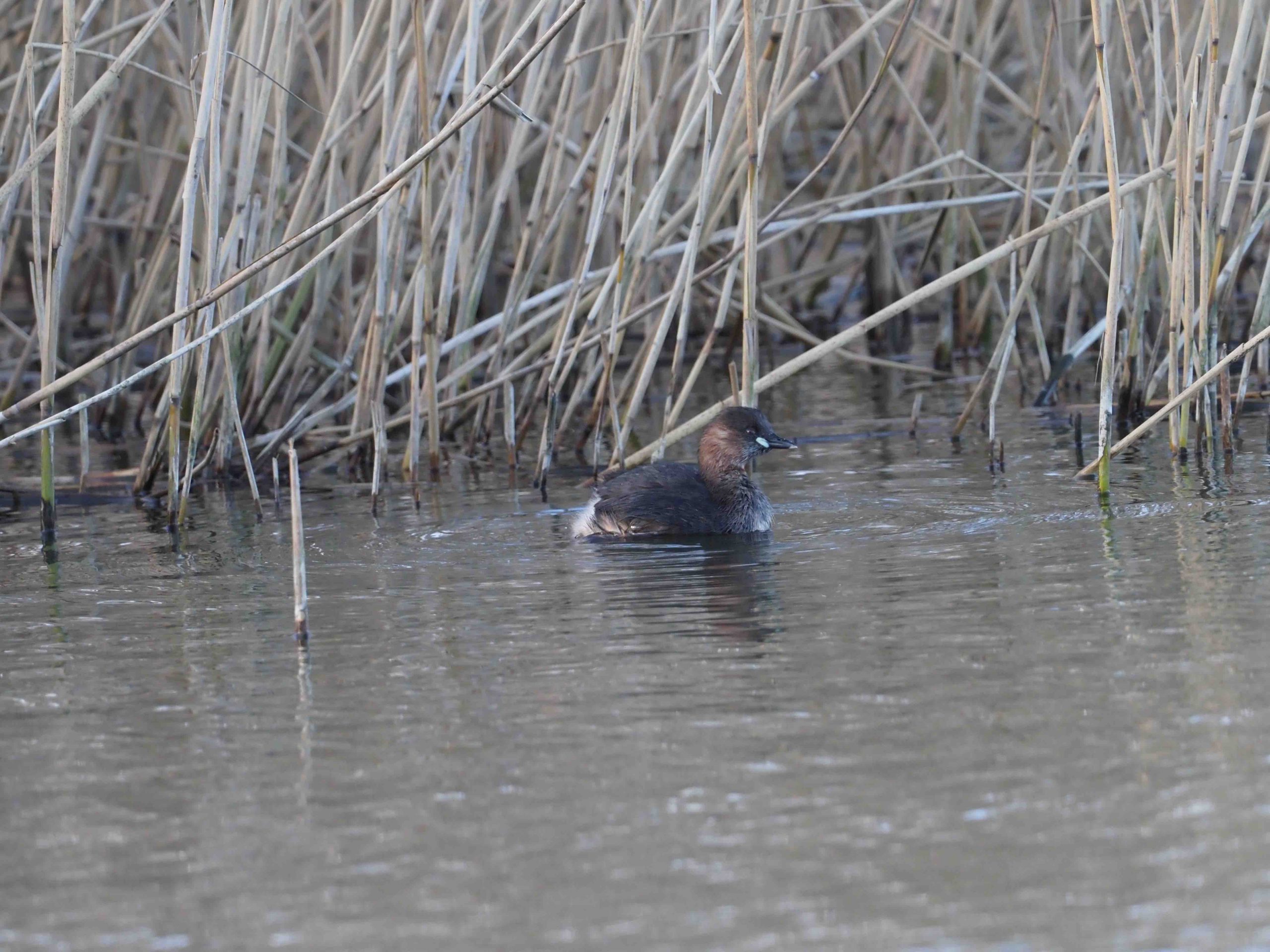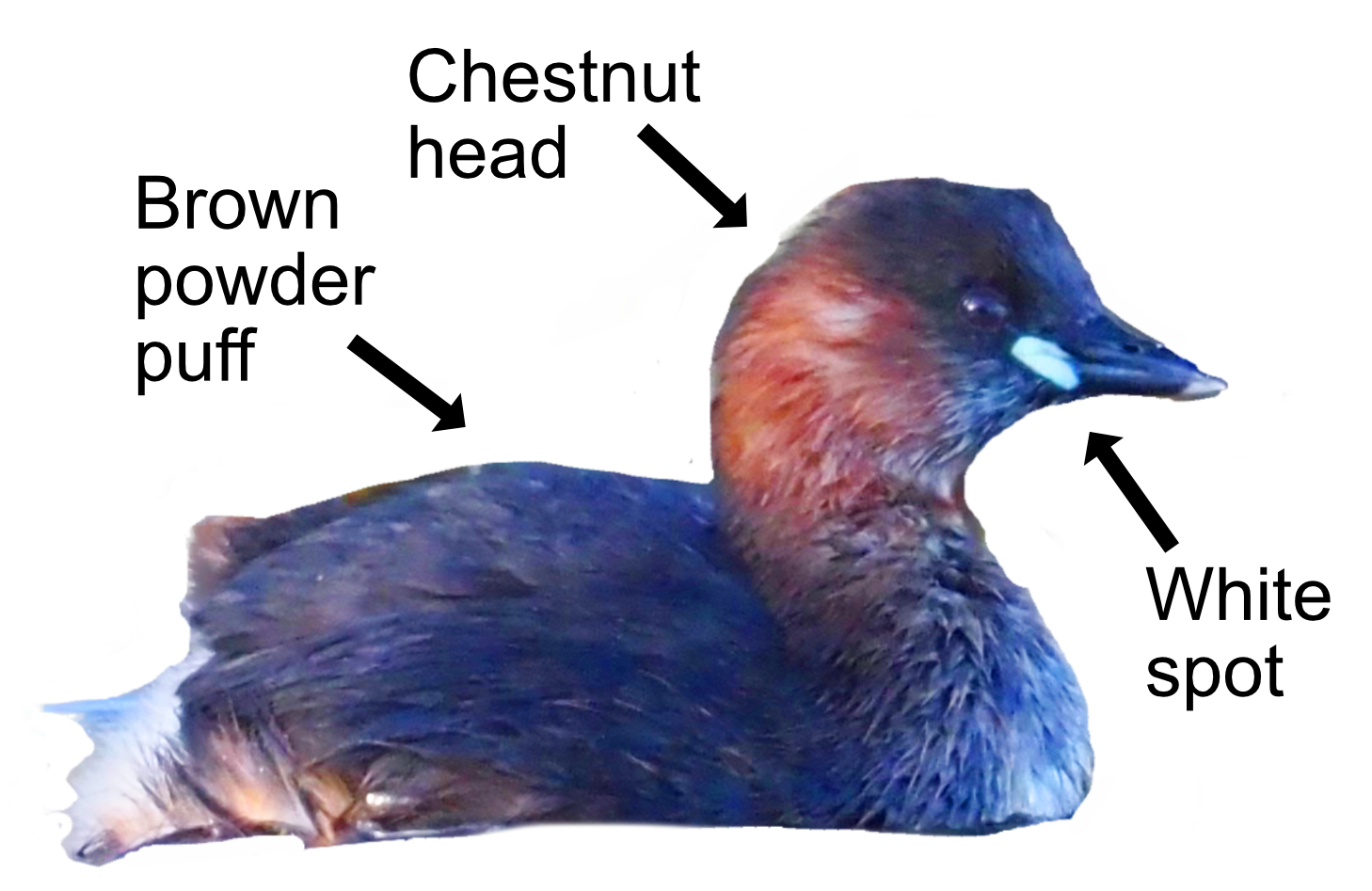
The small and secretive Little Grebe is often called a 'Dabchick', an old term that means diving chick, which is just what they do - the minute you see them! They are like little corks, diving down and bobbing up in the reeds where they are safely hidden and then giggling about it. They are at home anywhere there are plenty of reeds like moorland tarns, lakes, quiet rivers and park ponds.
Smaller than a Moorhen, the Little Grebe looks dumpy and blunt tailed like a cute floating powder puff. They have a dark brown body, paler underparts, and a chestnut neck, throat and cheeks. They have a pale spot at the base of their bill. Their main call is a cheeky giggling, a sound of the summer.
Little Grebes eat insects, small fish, and shellfish. They are excellent swimmers and can pursue fish and aquatic insect prey underwater, often diving to depths of 2 metres.

They build a floating nest of water weed amongst the reed beds and lay 1-8 eggs (usually 4) which hatch after 20 days. The parents will cover the eggs with weed to hide them whenever they leave the nest. The youngsters are soon mobile after hatching and leave the nest, only returning when they need a rest. The young are cared for by both adults and often ride on their backs for safety. They become fully independent after 35 days and can fly 10 days later. Little Grebes will usually have 2 broods.
Little Grebes are mainly resident, but in winter they will often leave smaller ponds and congregate on larger, safer waters. Northern birds also move south to where it is a bit warmer. There are about 7,000 pairs in Britain, though they are a bit hard to count as they keep bobbing out of sight!
Their Latin name is 'tachybaptus ruficollis' where 'tachybaptus' comes from the Greek 'takhus' for 'fast' and 'bapto' for 'to sink under'. The 'ruficollis' is from Latin 'rufus' for 'red' and 'collis' for 'necked'. And that is just what they are; a red-necked fast sinking-under bird (that giggles).